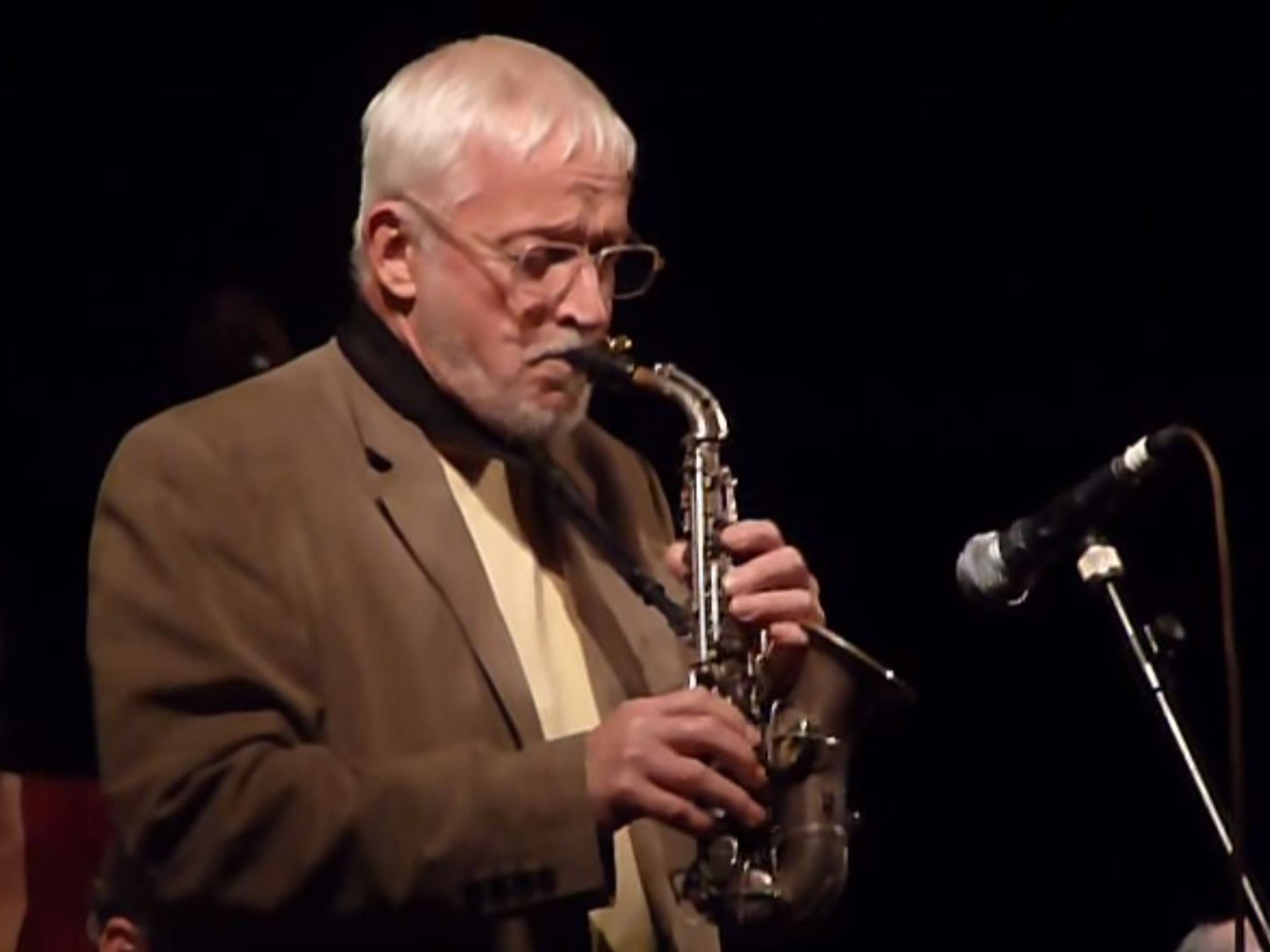Jim Galloway: Saxophonist who left his native Scotland to become one of the leading lights of the Canadian jazz scene

Fifty years in Canada did nothing to blunt Jim Galloway’s Ayrshire accent, but having a West of Scotland accent in no way blunted his ability to play saxophone as if he had been born in New Orleans, like his idol Sidney Bechet.
For half a century, Galloway played the notoriously difficult soprano instrument in the Bechet manner, albeit with a cleaner and more accurate intonation and with a clear, sunlit sound.
His preferred territory lay somewhere between Dixieland and swing, though he was somewhat impatient with category and managed to strike up a long-standing relationship with the Oklahoman pianist and singer Jay “Hooty” McShann, who became a stalwart of Kansas City jazz and is often seen as a precursor of bebop. Galloway’s place in Canadian jazz, and his access to changing styles in the music, came through the Toronto Jazz Festival, which he helped to found and of which he was artistic director for more than two decades.
James Braidie Galloway was born in Kilwinning, Ayrshire, in 1936, which made him almost exactly as old as the Canadian Broadcasting Service which would later do so much to propagate his music and personality. When a British journalist gave him a copy of Gordon Williams’s novel of growing up in rural Ayrshire, From Scenes Like These, Galloway conceded that his life had been easier and luckier than that of the young hero, but that there were some strong similarities, not least his desire to get away.
He studied both clarinet and alto saxophone in Glasgow, beginning to play locally on the Scottish scene, but in 1964 emigrated to Canada, where he established a group called the Metro Stompers. Though he continued for a time to play other horns, he began to focus on the soprano, often favouring a curved rather than the more usual straight model. “A sax shouldn’t be longer than your necktie, in my opinion”, he once said.
In the early 1970s Galloway was recording for the Canadian-based Sackville label, an imprint that combined an interest in roots jazz and blues with a strong reputation for avant-garde releases. In 1973 he made Three’s Company with pianist Dick Wellstood and worked again with the pianist (who doubled on an electric instrument) on the fine Walking On Air.
A compilation of Sackville material from the 1970s was called Music Is My Life; it featured performances with Wellstood, McShann, a visiting Humphrey Lyttelton and local stalwarts guitarist Ed Bickert and bassist Don Thompson, the latter one of the few to keep pace with Galloway’s rapid-fire Scottish patter. Other eminent collaborators included the cornetist Wild Bill Davison and the Russian-born Chicago pianist Art Hodes.
Galloway became involved with what was originally known as Du Maurier Downtown Jazz in Toronto and became an energetic supporter. A colleague on the committee, Fay Olson, said, “Toronto wouldn’t have a jazz festival if it weren’t for Jim”. Where others doubted, Galloway sought practical solutions. He was an expert communicator and presented Jazz.FM91’s Journeys In Jazz programme and hosted CKFM’s Alive! from 1981 to 1987, when he became artistic director of the TD Toronto Jazz Festival
His own Wee Big Band and Jazz Canada were occasional groupings that should have been encouraged to record more but they were regular features of jazz in Toronto and across the country. It was a perfect compromise for Galloway, a personnel small enough to tour or to fit into a club like the Café des Copains but large enough to deliver what Galloway liked to describe, with an enthusiastic grimace, as “oomph”. Partly through the group, partly through his role with the Toronto Jazz Festival, he built strong relationships with a widening pool of like-minded players, including fellow saxophonist Fraser McPherson, bassist Neil Swainson and drummer Don Vickery.
Wee Big Band performances and those conducted under other leaders were invariably tightly prepared but good-humoured. “I don’t see much point in asking people to come to a jazz concert and sending them home miserable,” he said. “And I don’t have any problem about trying to make them laugh. It’s jazz, not psychiatry. Or chiropody.” A good example of his commitment to music as entertainment is 1992’s Jim And Jay’s Christmas made with McShann, a rare example of a Yuletide jazz record that rises above the usual bonhomie and warm punch.
In 1993 Galloway was profiled on CBC. In 2002, he was made Chevalier of the Ordre des Arts et des Lettres. Seven years later, he stood down as artistic director of the Toronto Jazz Festival. His last really distinctive recording was Echoes of Swing in 2003, on which he played a baritone saxophone that was considerably larger than a necktie. His health failed subsequently and he died while receiving palliative care, just before what he never stopped referring to as Hogmanay.
James Braidie Galloway, saxophonist, bandleader and festival director: born Kilwinning, Ayrshire 28 July 1936; died Toronto 30 December 2014.
Subscribe to Independent Premium to bookmark this article
Want to bookmark your favourite articles and stories to read or reference later? Start your Independent Premium subscription today.

Join our commenting forum
Join thought-provoking conversations, follow other Independent readers and see their replies